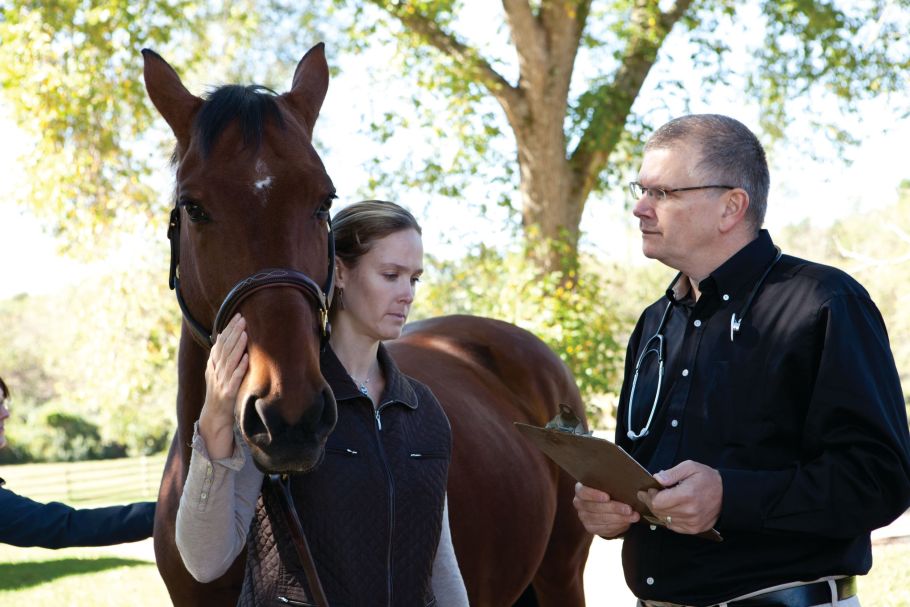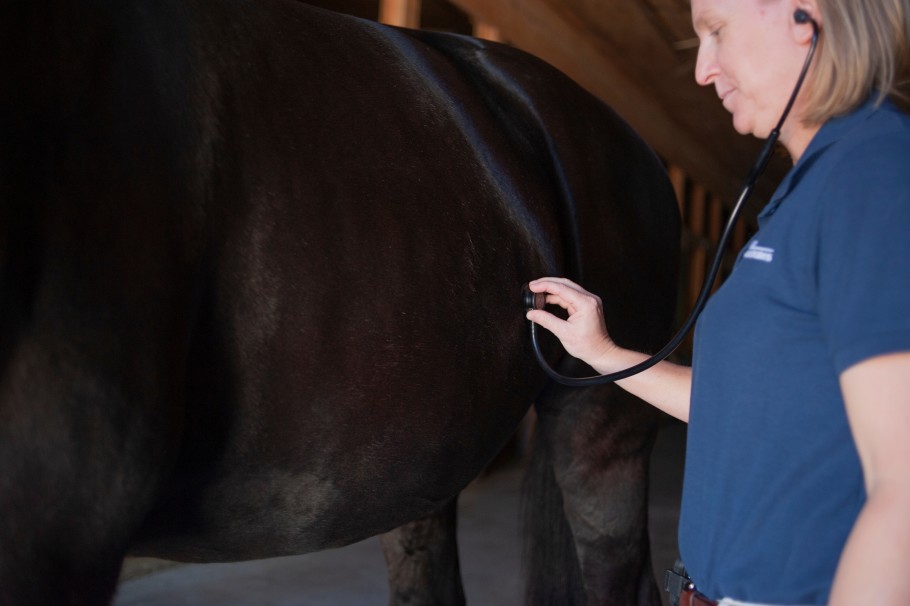How to Prevent Colic in Horses - Proven Tips to Reduce Risk
Updated December 20, 2023 | By: Dr. Lydia Gray

Colic is a common and potentially life-threatening condition in horses that owners should try to prevent through proven management and nutrition strategies. Dr. Noah Cohen, Professor and Associate Department Head at Texas A&M University’s College of Large Animal Medicine and Surgery, has organized studies of the causes of colic into four main areas [1].
1. Diet and Feeding

"Changes in diet, specifically changes in the batch, type, or amount of hay and in the type or amount of concentrate, are associated with an increased risk of colic."
Some horse owners have only been concerned about being careful when changing their horse’s grain. However, this finding shows that owners must also take care when switching hay, since providing different forage can increase the risk of colic by 10x (providing different grain can increase the risk of colic by 5x).
"Turnout of horses onto lush pasture may predispose to colic, and changing pastures also may be associated with colic."
Just like when changing hay, horse owners should take care when rotating between pastures because the type of forage may vary considerably. Consider adding a digestive supplement with prebiotics, enzymes, yeast, and other helpful ingredients to assist your horse during feed transitions. Research shows that:
- Prebiotics can reduce disruption in the cecum and colon and inhibit the absorption of harmful bacteria in the hindgut
[2]. - Enzymes can increase the proper digestion of sugars and starches in the foregut, reducing the incidence of hindgut acidosis
[3]. - Yeast can improve fiber digestion and assist the beneficial bacteria of the cecum in adjusting to feed changes
[4].
2. Stabling and Housing

"Increased time being stalled is a risk factor for impaction of the large colon."
Daily turnout or exercise is good for horses on a number of levels. When it is not possible due to lameness, weather changes, or other reasons, owners should make sure other risk factors are accounted for, such as limiting grain intake, increasing water intake, and keeping lots of the same batch of hay in front of their horse.
"Lack of access to adequate fresh water is a risk factor for colic."
Studies show horses with access to grass or hay but not water had a higher incidence of colic than horses that were able to eat and drink at the same time. In the winter, horses will drink more water if it is warmed, which is one strategy to encourage drinking. Another is to top-dress feed with electrolytes or salt, which stimulates thirst and ultimately helps prevent dehydration.
3. Activity

"Both increases and decreases in activity levels may be associated with colic."
However, it is difficult to blame colic on changes in activity alone because many times changes in exercise go hand-in-hand with changes in stalling and feeding. For example, a horse that becomes lame may be prescribed stall rest and a hay-only diet when he was used to daily riding, turnout on pasture, and grain. This is a time when a digestive supplement may be helpful in maintaining a healthy GI tract.
4. Veterinary Health Management

"Regular administration of an anthelmintic (deworming), rather than infrequent purging of parasites, appears to decrease the risk of colic."
It makes sense that using a daily dewormer to prevent infestation and migration of parasites would help prevent colic that is due to inflammation of the gut wall or GI blood vessels. Farms that perform regular fecal examinations have also been shown to have a reduced incidence of colic.
"In the UK, strong evidence exists that tapeworms are associated with ileal impactions and other forms of colic."
Although the incidence of tapeworms in the US varies by region, deworming with products that contain praziquantal) have been proven to control this particular parasite.
Evidence-Based References
- Robinson, N.E.. (2003). Current Therapy in Equine Medicine: Fifth Edition.
- Respondek F, Goachet AG, Julliand V. Effects of dietary short-chain fructooligosaccharides on the intestinal microflora of horses subjected to a sudden change in diet. J Anim Sci. 2008 February;86(2):316-23.
- Richards N, Choct M, Hinch G, Rowe JD. Examination of the use of exogenous alpha amylase and amyloglucosidase to enhance starch digestion in the small intestine of the horse. Animal Feed Science and Technology. 2004 May;114(1-4):295-303.
- Agazzi A, Ferroni M, Fanelli A, et al. Evaluation of the effects of live yeast supplementation on apparent digestibility of high fiber diet in mature horses using the acid insoluble ash marker modified method. J Eq Vet Sci. 2011 January;31(1):13-18.